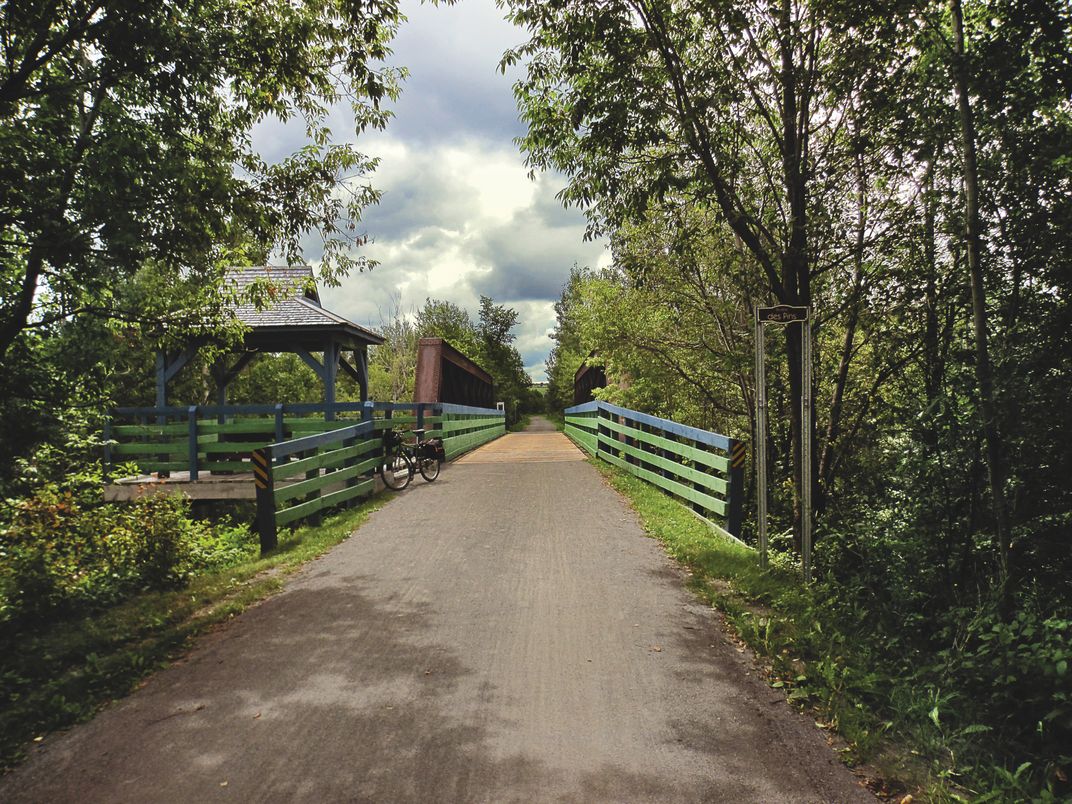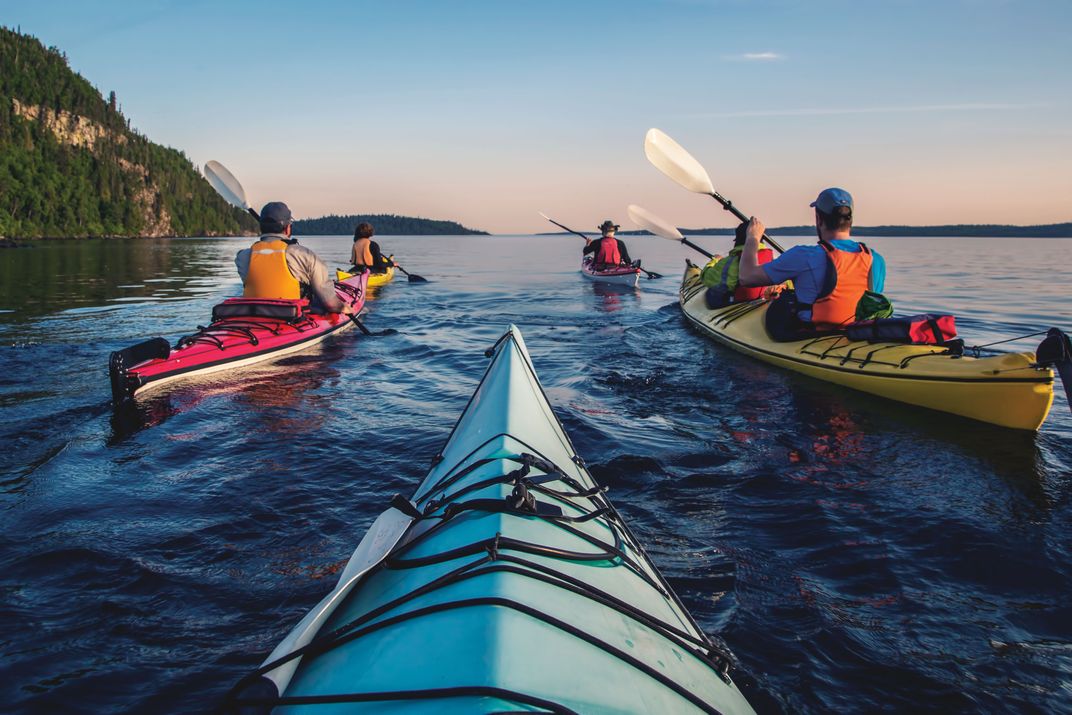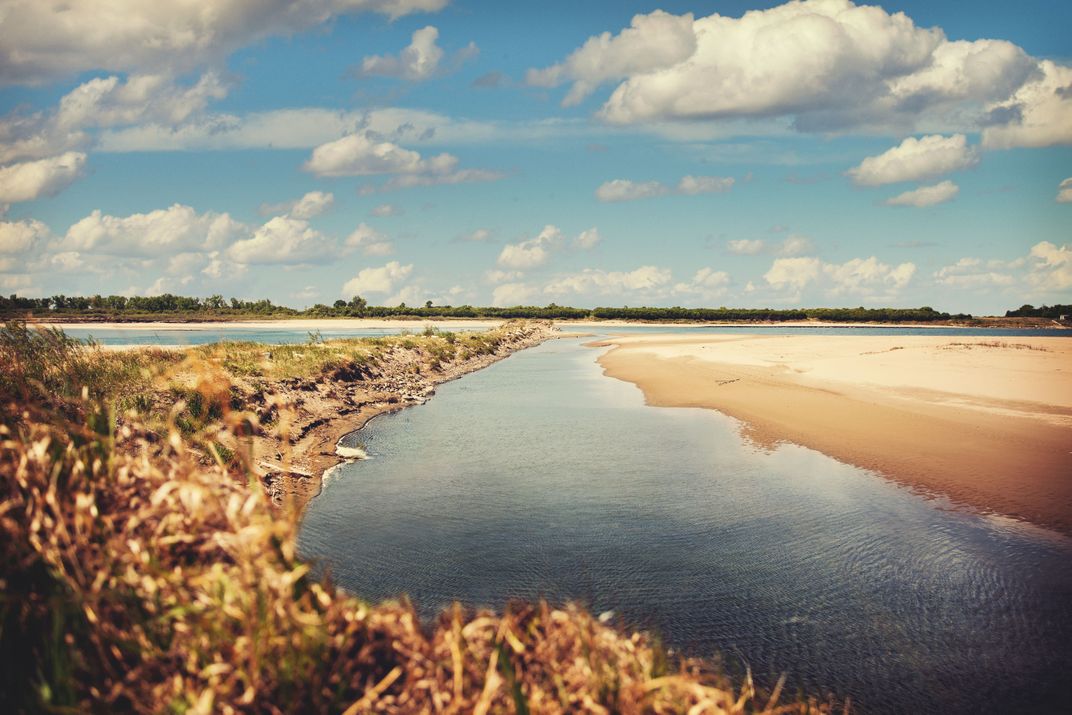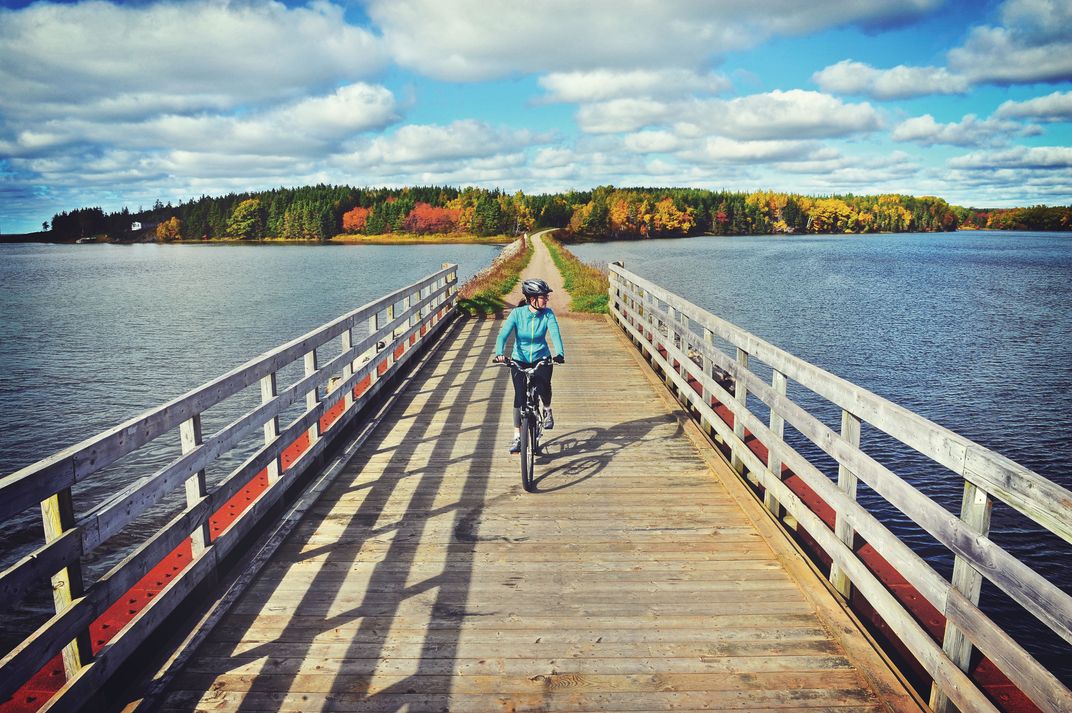Canada Is Building a Trail That Measures Almost 15,000 Miles
In 2017, the world’s longest trail will finally be complete
Do you like to hike? If your answer is yes, consider booking a trip to Canada for 2017. But you might want to pack a few extra pairs of hiking boots—as Eillie Anzilotti reports for CityLab, Canada’s newest trail will be nearly 15,000 miles long.
No, that’s not a typo. When it’s finished next year, the Trans Canada Trail will clock in at 14,864 miles long, nearly 13,000 miles of which are connected. As Anzilotti reports, the trail will open to everyone from cyclists to skiiers, horseback riders and hikers in 2017 and will be the world’s longest recreational trail.
Large swaths of the trail, which is a community-based project that links together pieces of trail owned and maintained by local governments, provinces and other entities, are already complete. Trail officials estimate that already, four out of five Canadians live within 30 minutes of the trail. In keeping with the huge country’s maritime heritage, 26 percent of the trail is on water, which explains why paddling and canoeing are acceptable ways to navigate it.
Nobody owns the trail itself; rather, it’s a linked network of locally administered trail portions. The bigger trail is a patchwork of smaller ones that stretch from the Atlantic to the Pacific and circle up to the Arctic Ocean, too. The finished sections are remarkable not just for their number (over 400 community trails), but for their color: green. Some of the trails do have a more urban feel, like sections that go through Ottawa and Toronto), but green space is a priority for trail builders.
So is volunteerism and cooperation. Each province has spent hundreds of thousands of dollars building their portions of the trail, while the Canadian government has donated over $35 million so far. Individuals also pitch in with financial donations and volunteer hours building and maintaining portions of the trail, and the Canadian government recently decided to sweeten the deal by matching individual donations with 50 cents for every donated dollar.
Not everyone is pleased about the prospect of a gigantic, continent-spanning trail. Cyclists, for example, complain that the trail is erratic and hard to navigate in some sections. In Newfoundland, a section of the trail was threatened when trail officials and an organization dedicated to promoting use of a former railroad disputed over who should repair a closed bridge. And environmental groups have claimed that portions of the trail could threaten natural habitats and divert needed resources from conservation in places like Jasper National Park in the Canadian Rockies.
Despite those bumps on the trail to completion, construction is still ongoing. The goal is to have the trail completed by Canada’s 150th anniversary on July 1, 2017, a milestone that will also throw open the country’s 46 national parks and hundreds of national historical sites to visitors for free. By then, the trail will have been 25 years in the making—and well worth the effort of packing a few more hiking boots in the suitcase.
/https://tf-cmsv2-smithsonianmag-media.s3.amazonaws.com/accounts/headshot/erin.png)







/https://tf-cmsv2-smithsonianmag-media.s3.amazonaws.com/accounts/headshot/erin.png)